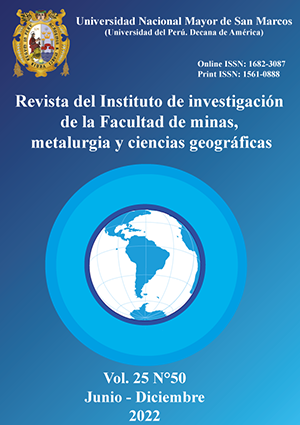Analysis of benzene as an indicator of air quality in fuel establishments
DOI:
https://doi.org/10.15381/iigeo.v25i50.24250Keywords:
benzene, environmental monitoring, air ECA, liquid fuels, parameterAbstract
The fuel trading activity carried out at taps and/or service stations generates a series of environmental impacts that alter the quality of the environmental components; In this sense, the Directorate of Environmental Affairs of Hydrocarbons of the Ministry of Energy and Mines and the Protocol of Environmental Quality of the Air of the Ministry of the Environment have determined that benzene is found in liquid fuels, and this would be an identified parameter to carry out. the follow-up of the environmental quality of the air through environmental monitoring, which is carried out in accordance with the provisions of the environmental management instruments approved by the Environmental Authority.
The present article carried out an analysis according to the results of the benzene parameter obtained in the environmental monitoring carried out during the year 2018 in various Establishments that commercialize liquid fuels, with which it was analyzed that in the four evaluated quarters of 2018, benzene only exceeded the RCT for air at three points, which represented 2% of the analyzed data. It was concluded that benzene is not representative for monitoring air quality in establishments where fuel is sold.
Downloads
Published
Issue
Section
License
Copyright (c) 2022 César Dongo-Cateriano, Nora Malca- Casavilca

This work is licensed under a Creative Commons Attribution 4.0 International License.
AUTHORS RETAIN THEIR RIGHTS:
a. Authors retain their trade mark rights and patent, and also on any process or procedure described in the article.
b. Authors retain their right to share, copy, distribute, perform and publicly communicate their article (eg, to place their article in an institutional repository or publish it in a book), with an acknowledgment of its initial publication in the Rev. Inst. investig. Fac. minas metal cienc. geogr.
c. Authors retain theirs right to make a subsequent publication of their work, to use the article or any part thereof (eg a compilation of his papers, lecture notes, thesis, or a book), always indicating the source of publication (the originator of the work, journal, volume, number and date).






